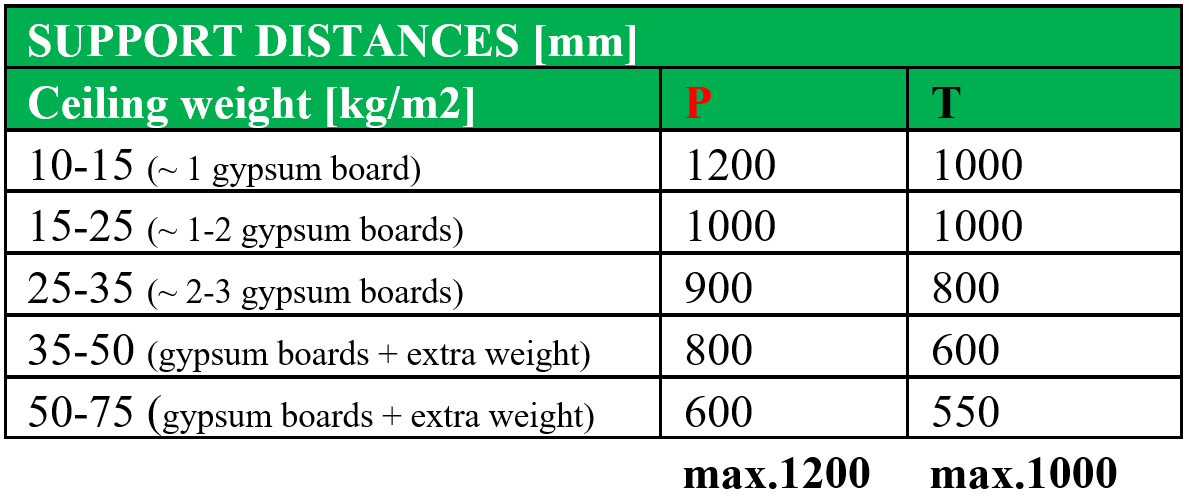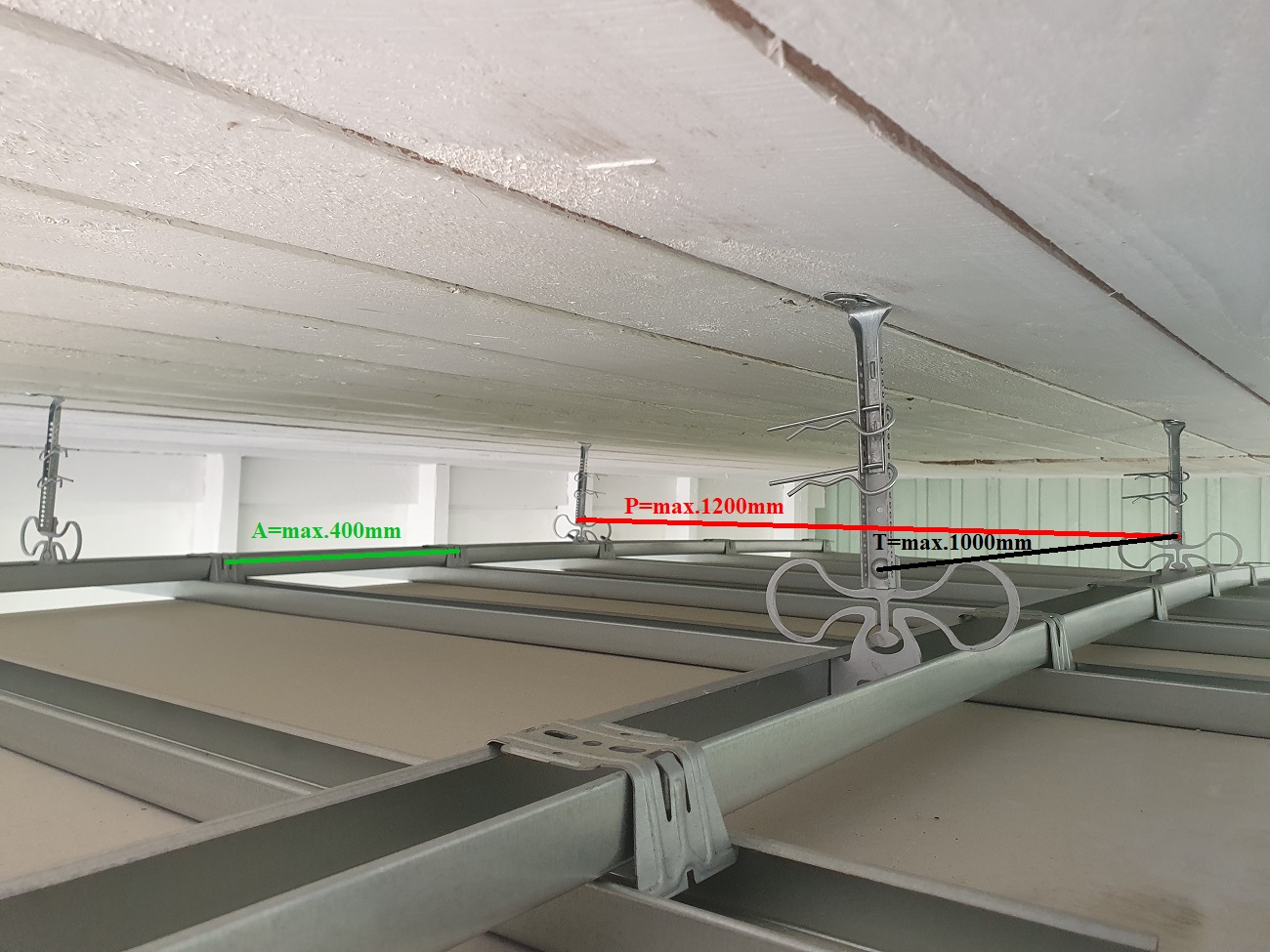18.12.2023
This article explains how InfiniSpring® Acoustic Hangers are dimensioned and used. Below is also one example presenting main steps required to define acoustic hanger amounts and support locations. InfiniSpring® Acoustic Hanger Product Cards can be found from the Product page with the information presented here.
First the ceiling weight (kg/m2) is defined by calculating the plasterboard total area density (kg/m2) by summing up the plasterboard weights. As the ceiling weight (kg/m2) is known below table gives the support distances P and T for the InfiniSpring® acoustic hangers.

Support distances P and T are shown in the below picture. Also maximum allowed support distances A, P and T for GK 60 mm ceiling system are shown below. Distance P is the distance between the upper ceiling profiles. Distance T is the distance between the acoustic hangers in the ceiling profile. Distance A is the distance between the lower ceiling profiles.

Using previous support distances the suspended ceiling can be assembled. In case of heavy objects additional hangers are needed, but they can be simply added close to the objects. InfiniSpring® acoustic hanger can take loads up to 25 kg and for example a 50 kg speaker requires two additional InfiniSpring® acoustic hangers close to the speaker location.
Example: a 7m x 10 m size ceiling utilizes two layers of plasterboard with following area densities: 1 x 10 kg/m2 and 1 x 15 kg/m2. How are acoustic hanger support distances and acoustic hanger amounts defined?
- The plasterboard total area density is 10 kg/m2 + 15 kg/m2 = 25 kg/m2 (ceiling weight).
- The support distances for the 25 kg/m2 can be checked from the above table: P = 1000 mm and T = 1000 mm. Lower GK 60 mm ceiling profiles are installed using A = max. 400 mm.
- The support distances (1000 mm x 1000 mm) mean that one acoustic hanger is needed for a square meter area.
- The total area of the ceiling is 7 m x 10 m = 70 m2 and the total number of InfiniSpring® Acoustic Hangers is 70 pieces.
After the support distances and acoustic hanger amounts are known suspended ceiling installation steps are as follows:
- 1. Acoustic hanger ceiling connection parts are installed to the roof using support distances from above.
- 2. Acoustic hangers are connected to GK 60 mm ceiling profiles.
- 3. Ceiling connection parts are connected to acoustic hangers.
- 4. GK-ceiling system is assembled using manufacturer’s instructions.
- 5. Plasterboards are lifted against the GK-ceiling system and plasterboards are fastened.
With these steps the suspended ceiling can be completed. For the soundproofing it is always important to make the ceiling airtight, but still allow the plasterboard ceiling to move freely on the acoustic hanger springs. Suitable mass or elastic material is required to air tighten the plasterboard ceiling sides and other possible inlets. Also, for example air ducts need to allow the suspended ceiling and acoustic hanger springs to move freely. One option is to use flexible bellows or install ducting flexibly using InfiniSpring®-springs.
Acoustic Products Installation Instructions with pictures can be found from the Product page. If you have any comments or questions, please do not hesitate to contact us.



